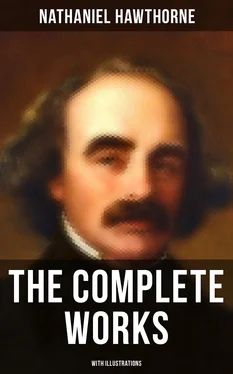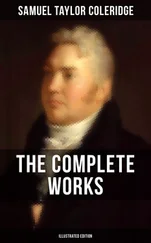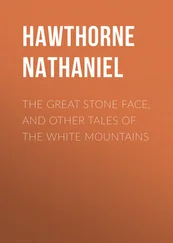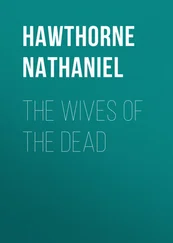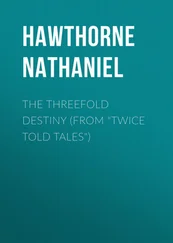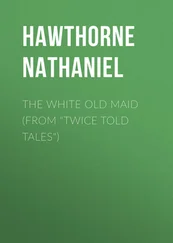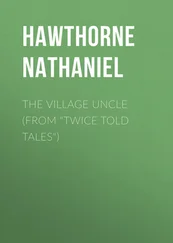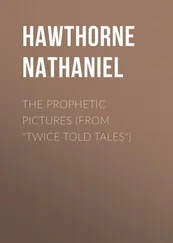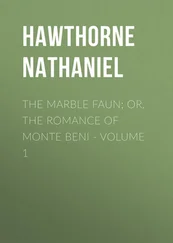Kenyon was in the inner room, but, hearing a step in the antechamber, he threw a veil over what he was at work upon, and came out to receive his visitor. He was dressed in a gray blouse, with a little cap on the top of his head; a costume which became him better than the formal garments which he wore whenever he passed out of his own domains. The sculptor had a face which, when time had done a little more for it, would offer a worthy subject for as good an artist as himself: features finely cut, as if already marble; an ideal forehead, deeply set eyes, and a mouth much hidden in a light-brown beard, but apparently sensitive and delicate.
“I will not offer you my hand,” said he; “it is grimy with Cleopatra’s clay.”
“No; I will not touch clay; it is earthy and human,” answered Miriam. “I have come to try whether there is any calm and coolness among your marbles. My own art is too nervous, too passionate, too full of agitation, for me to work at it whole days together, without intervals of repose. So, what have you to show me?”
“Pray look at everything here,” said Kenyon. “I love to have painters see my work. Their judgment is unprejudiced, and more valuable than that of the world generally, from the light which their own art throws on mine. More valuable, too, than that of my brother sculptors, who never judge me fairly, — nor I them, perhaps.”
To gratify him, Miriam looked round at the specimens in marble or plaster, of which there were several in the room, comprising originals or casts of most of the designs that Kenyon had thus far produced. He was still too young to have accumulated a large gallery of such things. What he had to show were chiefly the attempts and experiments, in various directions, of a beginner in art, acting as a stern tutor to himself, and profiting more by his failures than by any successes of which he was yet capable. Some of them, however, had great merit; and in the pure, fine glow of the new marble, it may be, they dazzled the judgment into awarding them higher praise than they deserved. Miriam admired the statue of a beautiful youth, a pearlfisher; who had got entangled in the weeds at the bottom of the sea, and lay dead among the pearl-oysters, the rich shells, and the seaweeds, all of like value to him now.
“The poor young man has perished among the prizes that he sought,” remarked she. “But what a strange efficacy there is in death! If we cannot all win pearls, it causes an empty shell to satisfy us just as well. I like this statue, though it is too cold and stern in its moral lesson; and, physically, the form has not settled itself into sufficient repose.”
In another style, there was a grand, calm head of Milton, not copied from any one bust or picture, yet more authentic than any of them, because all known representations of the poet had been profoundly studied, and solved in the artist’s mind. The bust over the tomb in Grey Friars Church, the original miniatures and pictures, wherever to be found, had mingled each its special truth in this one work; wherein, likewise, by long perusal and deep love of the Paradise Lost, the Comus, the Lycidas, and L’Allegro, the sculptor had succeeded, even better than he knew, in spiritualizing his marble with the poet’s mighty genius. And this was a great thing to have achieved, such a length of time after the dry bones and dust of Milton were like those of any other dead man.
There were also several portrait-busts, comprising those of two or three of the illustrious men of our own country, whom Kenyon, before he left America, had asked permission to model. He had done so, because he sincerely believed that, whether he wrought the busts in marble or bronze, the one would corrode and the other crumble in the long lapse of time, beneath these great men’s immortality. Possibly, however, the young artist may have underestimated the durability of his material. Other faces there were, too, of men who (if the brevity of their remembrance, after death, can be augured from their little value in life) should have been represented in snow rather than marble. Posterity will be puzzled what to do with busts like these, the concretions and petrifactions of a vain self-estimate; but will find, no doubt, that they serve to build into stone walls, or burn into quicklime, as well as if the marble had never been blocked into the guise of human heads.
But it is an awful thing, indeed, this endless endurance, this almost indestructibility, of a marble bust! Whether in our own case, or that of other men, it bids us sadly measure the little, little time during which our lineaments are likely to be of interest to any human being. It is especially singular that Americans should care about perpetuating themselves in this mode. The brief duration of our families, as a hereditary household, renders it next to a certainty that the great-grandchildren will not know their father’s grandfather, and that half a century hence at furthest, the hammer of the auctioneer will thump its knock-down blow against his blockhead, sold at so much for the pound of stone! And it ought to make us shiver, the idea of leaving our features to be a dusty-white ghost among strangers of another generation, who will take our nose between their thumb and fingers (as we have seen men do by Caesar’s), and infallibly break it off if they can do so without detection!
“Yes,” said Miriam, who had been revolving some such thoughts as the above, “it is a good state of mind for mortal man, when he is content to leave no more definite memorial than the grass, which will sprout kindly and speedily over his grave, if we do not make the spot barren with marble. Methinks, too, it will be a fresher and better world, when it flings off this great burden of stony memories, which the ages have deemed it a piety to heap upon its back.”
“What you say,” remarked Kenyon, “goes against my whole art. Sculpture, and the delight which men naturally take in it, appear to me a proof that it is good to work with all time before our view.”
“Well, well,” answered Miriam, “I must not quarrel with you for flinging your heavy stones at poor Posterity; and, to say the truth, I think you are as likely to hit the mark as anybody. These busts, now, much as I seem to scorn them, make me feel as if you were a magician.. You turn feverish men into cool, quiet marble. What a blessed change for them! Would you could do as much for me!”
“O, gladly!” cried Kenyon, who had long wished to model that beautiful and most expressive face. “When will you begin to sit?”
“Poh! that was not what I meant,” said Miriam. “Come, show me something else.”
“Do you recognize this?” asked the sculptor.
He took out of his desk a little old-fashioned ivory coffer, yellow with age; it was richly carved with antique figures and foliage; and had Kenyon thought fit to say that Benvenuto Cellini wrought this precious box, the skill and elaborate fancy of the work would by no means have discredited his word, nor the old artist’s fame. At least, it was evidently a production of Benvenuto’s school and century, and might once have been the jewel-case of some grand lady at the court of the De’ Medici.
Lifting the lid, however, no blaze of diamonds was disclosed, but only, lapped in fleecy cotton, a small, beautifully shaped hand, most delicately sculptured in marble. Such loving care and nicest art had been lavished here, that the palm really seemed to have a tenderness in its very substance. Touching those lovely fingers, — had the jealous sculptor allowed you to touch, — you could hardly believe that a virgin warmth would not steal from them into your heart.
“Ah, this is very beautiful!” exclaimed Miriam, with a genial smile. “It is as good in its way as Loulie’s hand with its baby-dimples, which Powers showed me at Florence, evidently valuing it as much as if he had wrought it out of a piece of his great heart. As good as Harriet Hosmer’s clasped hands of Browning and his wife, symbolizing the individuality and heroic union of two high, poetic lives! Nay, I do not question that it is better than either of those, because you must have wrought it passionately, in spite of its maiden palm and dainty fingertips.”
Читать дальше
